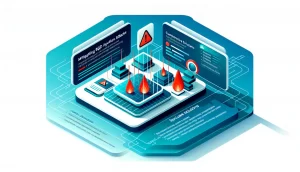Penetration Testing vs Vulnerability Scanning: Understanding the Differences
In the ever-evolving landscape of cybersecurity, organizations often face confusion between penetration testing and vulnerability scanning. These two essential security practices are sometimes misunderstood as interchangeable or alternatives to one another, which can create gaps in an organization’s overall security posture. In reality, both penetration testing and vulnerability scanning serve unique functions and should be integrated harmoniously into an effective cybersecurity strategy.
Introduction to Penetration Testing and Vulnerability Scanning
Cybersecurity continues to be a top priority for businesses worldwide, with global cybercrime costs projected to reach $11.4 million per minute by 2025, according to Cybersecurity Ventures. This alarming trend underscores the importance of proactive security measures like penetration testing and vulnerability scanning.
- Primary keyword: penetration testing
- Secondary keywords: vulnerability scanning, cybersecurity strategy, security posture
Before diving into their distinctions, let’s briefly define both terms:
What is Penetration Testing?
Penetration testing (pen testing) is a manual, comprehensive security evaluation where experienced cybersecurity professionals, known as penetration testers or ethical hackers, simulate real-world cyberattacks. The goal is to identify vulnerabilities, misconfigurations, and exploitable security weaknesses within an organization’s systems, networks, or applications.
Pen testers use a combination of automated tools and manual techniques, including social engineering, to replicate the tactics, techniques, and procedures of malicious actors—while ensuring no harm is done to the organization’s assets during testing. When vulnerabilities are successfully exploited, detailed reports outline the risks and provide actionable recommendations for remediation.
Penetration testing is especially effective in uncovering complex, logic-based vulnerabilities that automated tools may miss — such as business logic flaws or newly discovered zero-day threats.
Outsourcing and Expertise
Due to the specialized knowledge required, many organizations choose to outsource penetration testing to experienced third-party providers. External testers offer a fresh, objective perspective, often spotting issues internal teams might overlook. Moreover, pen testing engagements are typically costly and resource-intensive, often performed quarterly or biannually.
Penetration Testing vs Bug Bounties
Some companies supplement their security testing with bug bounty programs, which invite ethical hackers worldwide to find vulnerabilities in exchange for rewards. While valuable, bug bounties are unpredictable and should not replace formal penetration testing. Combining both approaches offers a more robust security defense.
What is Vulnerability Scanning?
Vulnerability scanning is an automated process that uses specialized software tools to identify known vulnerabilities, missing patches, misconfigurations, and security weaknesses across systems, applications, and networks. Scanners operate by mapping assets, evaluating them against extensive vulnerability databases, and reporting findings.
Unlike penetration tests, vulnerability scans require minimal human intervention and can be scheduled to run regularly — sometimes as frequently as daily or weekly. This continuous monitoring helps organizations maintain situational awareness and respond promptly to emerging threats.
Advanced vulnerability scanners incorporate vulnerability management features, allowing prioritization of risks based on severity and exploitability, streamlining patch management and remediation efforts.
Integration into Development Processes
To improve security throughout the software development lifecycle (SDLC), organizations integrate automated vulnerability scanning into continuous integration/continuous deployment (CI/CD) pipelines. This enables early detection and mitigation of security flaws, reducing costly fixes post-deployment.
Key Differences Between Penetration Testing and Vulnerability Scanning
| Aspect | Penetration Testing | Vulnerability Scanning |
|---|---|---|
| Method | Manual and automated techniques | Automated |
| Scope | Deep, targeted assessment including logic and chain exploits | Broad, surface-level coverage of known vulnerabilities |
| Frequency | Periodic (quarterly or biannually) | Frequent or continuous |
| Cost | Higher due to expertise and time | Lower, can be automated |
| Outcome | Detailed exploit proof and remediation advice | List of identified vulnerabilities with severity ratings |
| Goal | Simulate attacks to test defenses | Identify and quantify vulnerabilities |
Establishing a Comprehensive Cybersecurity Strategy
Effective security relies on leveraging both penetration testing and vulnerability scanning to build a layered defense, or defense-in-depth. Here’s why integrating both is critical:
- Continuous Vulnerability Awareness: Regular vulnerability scanning provides ongoing monitoring and quick detection of known issues.
- Deep Dive Evaluations: Penetration tests expose complex risks that automated scans miss, such as chained exploits or business logic flaws.
- Regulatory Compliance: Many standards such as PCI DSS, HIPAA, and ISO 27001 mandate both vulnerability scanning and pen testing as separate requirements.
- Risk Prioritization: The combined insights help prioritize remediation efforts effectively.
- Security Posture Improvement: Regular assessments reinforce preventive and detective security controls.
Recommendations for Businesses
- Implement automated vulnerability scanning with frequent schedules, ideally integrated into CI/CD pipelines for vulnerability management.
- Conduct penetration testing at least biannually or after major system changes to uncover hidden vulnerabilities.
- Consider bug bounty programs as a supplemental means to discover elusive security gaps.
- Ensure detailed reporting from all security assessments to guide effective remediation.
- Adopt a holistic cybersecurity approach combining multiple tools and expert analyses.
Conclusion
Understanding the distinct roles of penetration testing and vulnerability scanning is essential for maintaining a resilient cybersecurity posture. While vulnerability scanning offers continuous, automated detection of known vulnerabilities, penetration testing simulates real-world attacks to reveal deep, logic-based weaknesses. Together, these activities complement each other and form the foundation of an effective cybersecurity strategy.
By balancing these approaches with current best practices, organizations can better protect critical assets, comply with regulatory requirements, and prepare for evolving cyber threats.



